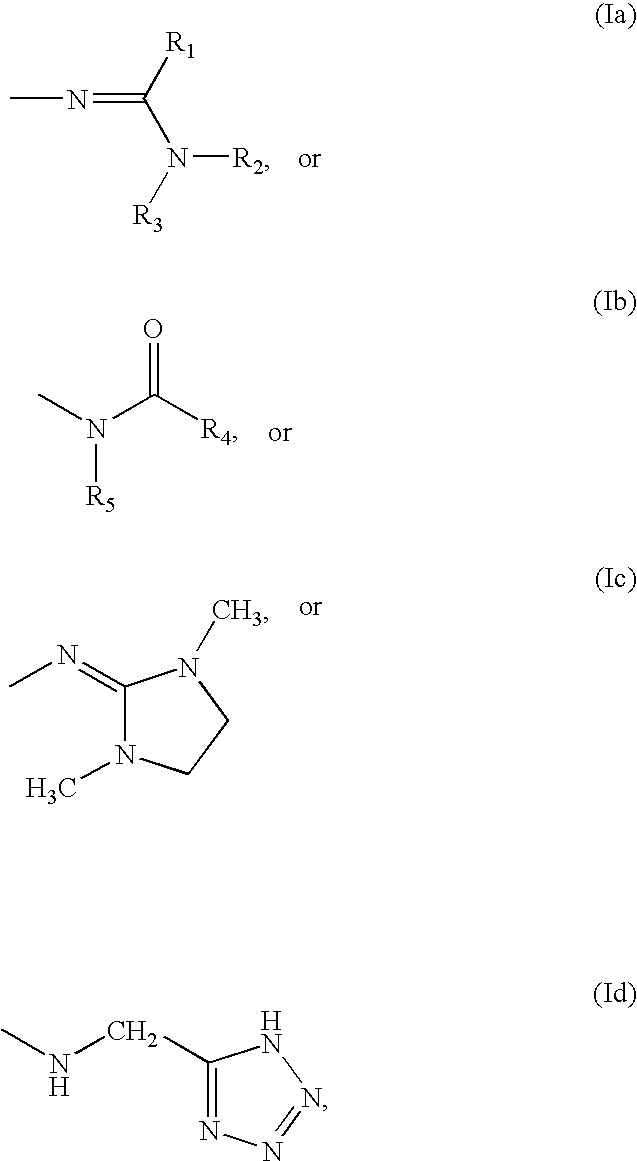Compositions and methods for promoting neural regeneration
a neural regeneration and composition technology, applied in the field of tissue regeneration, can solve the problems of not being able to grow new neurons or generate new axons, not being able to directly identify multipotential cells, and not being able to define the mechanisms, so as to improve learning and memory function. the effect of recovery
- Summary
- Abstract
- Description
- Claims
- Application Information
AI Technical Summary
Benefits of technology
Problems solved by technology
Method used
Image
Examples
example 1
In Vitro Experiment
Embryonic Day 18 Cortical Neuron Culture
[0128] CNS tissue was harvested from embryonic day 18 (E-18) rat pups (Taconic Labs) using sterile technique and was stored in ice cold Hank's Balanced Salt Solution (HBSS—Gibco). Brains were removed from the cranium of 10 embryos, and the meninges removed to expose the underlying cortex. Cortex was isolated from the rest of the brain and stored in ice cold HBSS. After all material was collected, the tissue was minced and trypsinized using 0.1% trypsin (Sigma) for 30 minutes at 37° C. Trypsin action was inhibited by adding 0.5 mg / ml soybean trypsin inhibitor (Gibco). Tissue was rinsed with HBSS and triturated using a flame narrowed Pasteur pipette coated with fetal bovine serum (FBS—MediaTech).
[0129] Dissociated cells were counted and plated into 24 well cluster plates in DMEM (MediaTech) plus 10% FBS (MediaTech) at a density of 5×105 cells per well. Twenty-four well cluster plates were coated with poly-D-lysine prior to ...
example 2
In Vitro Experiment
Neonatal Astrocytes
[0133] Post natal day 5 rat pups (Taconic Labs) were decapitated, skin covering the cranium was removed so the bone over top the brain could be opened. Using a sterile spatula, the brain was extracted from the opened cranium and transferred to a 60 mm petri dish (Corning) containing sterile, ice cold Hank's balanced salt solution (HBSS). The meningial tissue was removed from the cortex, the cortex was gently teased away from the subcortical structures and transferred to a new 60 mm petri dish containing ice cold HBSS. Using a pair of fine, curved forceps, the desired cortical material was pinched from the remainder of the cortex and transferred to a new 60 mm petri dish containing ice cold HBSS. For most experiments, only tissue in the immediate vicinity of the subventricular zone was collected while in a few experiments, almost the entire cortex was pinched leaving only the outer most layer of cortical tissue behind. After harvesting all cort...
example 3
In Vivo Experiment
[0136] Fischer F344 female rats (Taconic, Germantown N.Y.) weighing 175-200 g were subjected to 25 mm weight drop contusion injury as previously described (Gruner J A, J. Neurotrauma, 1992 Summer; 9(2):123-8) with slight modifications. Briefly, under isoflurane anethesia, a laminectomy exposing the T8-9 spinal cord segment was performed and a rod weighing 10 g was dropped on the exposed cord from 25 mm height. The rod diameter at its end (where cord-rod interaction takes place) is 2.8 mm. A total of 12 rats were injured. Four animals were used as donor animals, eight as recipients. Two donor animals were administered N-[4-[(4-fluorophenyl)sulfonyl]phenyl]acetamide at a dose of 100 mg / kg orally, and two other animals were treated with vehicle (cyclodextrin, 45% in distilled sterile water). Five days following donor treatment and four weeks following injury, donor animals were euthanized with CO2 according to the Guidelines set by the Pa...
PUM
| Property | Measurement | Unit |
|---|---|---|
| molecular weights | aaaaa | aaaaa |
| molecular weights | aaaaa | aaaaa |
| molecular weights | aaaaa | aaaaa |
Abstract
Description
Claims
Application Information
 Login to View More
Login to View More - R&D
- Intellectual Property
- Life Sciences
- Materials
- Tech Scout
- Unparalleled Data Quality
- Higher Quality Content
- 60% Fewer Hallucinations
Browse by: Latest US Patents, China's latest patents, Technical Efficacy Thesaurus, Application Domain, Technology Topic, Popular Technical Reports.
© 2025 PatSnap. All rights reserved.Legal|Privacy policy|Modern Slavery Act Transparency Statement|Sitemap|About US| Contact US: help@patsnap.com



